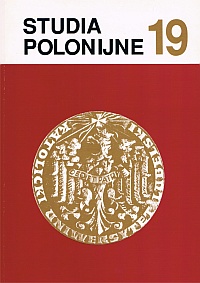Structure and Mechanisms of Contemporary East−West Migrations
Main Article Content
Abstract
This article addresses the problem of mass migration movements experienced by, and observed, in central and eastern European countries. As a result of democratisation processes citizens of the former Soviet-bloc states acquired the right to leave their home country at any time they so decided, the problems with obtaining a passport ceased to exist. The newly obtained right, along with economic hardships, and in some places, political unrest set into motion numerous migrants which have been heading for the west. Migratory potential generated by the former Soviet-bloc states has been further augmented by outflows from a number of developing countries in Asia, Africa, and in the Middle East. The latter migrants move into the region of central and eastern Europe in search for opportunities for further migration to the Western democracies. Thus, current migratory movement experienced by the regions are generally westward oriented. The article examines the problem of this westward migration, in particular the migratory routes, patterns and mechanisms.

